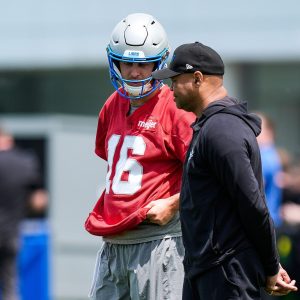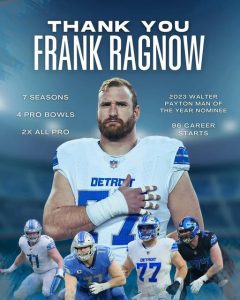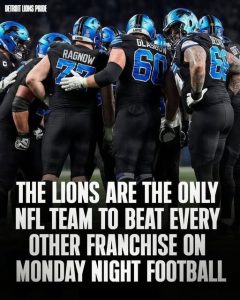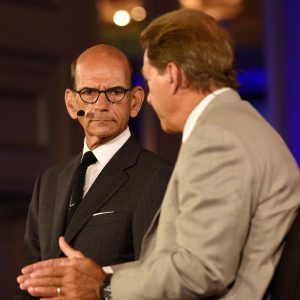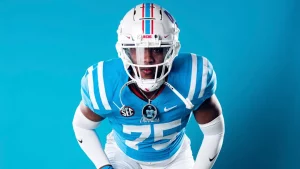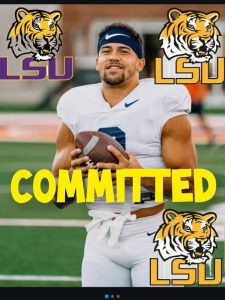
As the dust begins to settle on the spring football season, the Oklahoma Sooners are in the thick of roster retooling through the ever-active NCAA Transfer Portal. With Brent Venables entering a crucial season that will mark the program’s official transition into the SEC, every scholarship spot matters, and the portal has emerged as a key component in shaping a competitive roster. The spring window, open from April 16 to April 30, gives players another chance to explore new opportunities before summer workouts begin. And for a team like Oklahoma, which is both trying to build depth and plug holes in the roster, the next few weeks could prove to be as impactful as anything that happened on the practice field this spring.
Oklahoma has already been active in the portal this offseason, both in terms of players entering and new talent coming in. Some high-profile names have exited the program, while others are rumored to be on the fence. As the program pivots toward its SEC debut, the stakes are higher than ever. Managing the transfer portal with precision and strategic foresight is no longer a luxury—it’s a necessity.
Coming off an encouraging 10-win campaign in 2024, the Sooners are seeking to capitalize on their momentum. Their bowl win over Arizona gave fans a glimpse of what this team could be with the right pieces. But attrition is inevitable in the modern college football landscape, and Oklahoma has already lost several players who could’ve contributed in 2025. The key now is figuring out who will step up, who needs replacing, and where fresh blood is most urgently needed.
On the offensive side of the ball, quarterback Jackson Arnold is entrenched as the starter heading into the summer. The redshirt freshman showed flashes of brilliance in his limited action last season, and the staff is fully committed to him as the future face of the program. That said, quarterback depth has already taken a hit, and there’s reason to believe the Sooners might look to the portal for insurance. One name that has surfaced is Davis Beville, who initially entered the portal in January but ultimately decided to stay. However, with reps limited in the spring and younger quarterbacks like Michael Hawkins pushing for more time, the room remains fluid.
Wide receiver has also seen some turnover. The departure of former five-star wideout Theo Wease to Missouri last year set a precedent, and while the 2024 group proved to be explosive at times, depth remains an issue. The Sooners already welcomed in Purdue transfer Deion Burks this past winter, and his performance in spring practices suggests he’ll be a top target come fall. But the coaching staff isn’t done looking. With the SEC’s physical demands in mind, the Sooners could be targeting a bigger-bodied outside receiver or a slot specialist to complement Burks and Jalil Farooq.
Running back, a traditionally strong position for Oklahoma, has been another area of focus. Gavin Sawchuk emerged late last season as a reliable workhorse, and Javontae Barnes is fully healthy after battling injuries for much of 2024. However, the room saw some attrition with the departure of Marcus Major, and depth could be a concern if injuries hit again. Expect Oklahoma to explore portal options for a power back who can handle short-yardage situations and provide another layer to DeMarco Murray’s rotation.
Up front, the offensive line is undergoing one of the biggest transformations on the team. Bill Bedenbaugh’s unit is replacing three starters, including All-Big 12 tackle Tyler Guyton, who is projected to be a first-round NFL Draft pick. This spring was all about building chemistry and identifying which returners can step into bigger roles. Jacob Sexton and Cayden Green had solid springs, but Oklahoma is almost certainly going to add at least one offensive lineman from the portal—possibly a veteran with SEC or Big Ten experience who can anchor the line and provide leadership in a hostile environment.
Defensively, Venables and coordinator Ted Roof are still reshaping the unit in their image. The linebacker corps is solid, led by Danny Stutsman, who surprised many by returning for one more season. Kip Lewis and Jaren Kanak are expected to contribute heavily, but the depth behind them is a concern. There’s speculation that Oklahoma will look for a portal addition with experience and versatility to provide insurance and contribute on special teams. The Sooners have already lost a couple of depth pieces at linebacker to the portal, including Kobie McKinzie, who appeared in 10 games last season.
The secondary is another position group that has seen its share of movement. The emergence of Billy Bowman as a true star has been a bright spot, but the cornerback position remains unsettled. Gentry Williams had an up-and-down year, and the departure of Kani Walker has left a gap that hasn’t yet been fully addressed. Oklahoma brought in Michigan transfer DJ Waller Jr. in January, and the hope is that he’ll solidify one of the starting spots. But the SEC features some of the most talented and deep wide receiver rooms in the country, and the Sooners will need more than just starters—they’ll need rotational pieces who can step in without a drop-off in performance. Don’t be surprised if Oklahoma targets a veteran corner with multi-year starting experience.
Perhaps the biggest question on defense remains the interior defensive line. Oklahoma’s inability to consistently control the line of scrimmage has been a recurring theme over the past few seasons, and while the addition of Notre Dame transfer Jacob Lacey helped, he missed the entire spring due to injury. The Sooners are reportedly in the mix for several defensive tackles in the portal, and this is likely to be their top priority heading into the final weeks of spring. Adding a disruptive presence who can command double teams and collapse the pocket would do wonders for a defense that already has dynamic edge rushers like R Mason Thomas and PJ Adebawore.
Another area to watch is special teams. While it doesn’t get the same headlines, it’s often the difference in close games—especially in the SEC. Oklahoma lost punter Luke Elzinga to graduation, and the battle for his replacement has been inconclusive so far. A veteran transfer with experience punting in high-pressure environments could become a late addition if the staff isn’t fully confident in the options already on campus. Similarly, while Zach Schmit returns as the starting kicker, the coaching staff may look to bring in competition to push him during fall camp.
While most attention is rightly on potential additions, the outgoing players tell a story of their own. Some are looking for more playing time, others a fresh start, and a few simply didn’t fit into the current scheme. Among the notable spring exits are wide receiver LV Bunkley-Shelton, linebacker Kobie McKinzie, offensive lineman Jake Taylor, and defensive back Makari Vickers. Each of those departures opens a scholarship and, more importantly, an opportunity to upgrade the roster through the portal.
One trend that has emerged is Oklahoma’s focus on players with immediate eligibility who can compete at an SEC level right away. That’s a slight shift from the past, where the Sooners often targeted younger players with developmental upside. The change reflects the urgency of competing in what is widely considered the toughest conference in college football. Every player brought in has to be able to contribute quickly, either as a starter or as part of a key rotation.
The coaching staff has also been strategic in how they handle NIL and recruiting through the portal. Oklahoma’s collective has become more active in recent months, especially in helping land and retain talent that might otherwise consider departing. That internal stability will be crucial as other programs—especially SEC rivals—attempt to poach talent or outbid the Sooners for top-tier transfers. Having a cohesive NIL strategy and strong relationships with players and their families has already paid dividends this offseason, and it’s likely to remain a critical part of Oklahoma’s portal approach moving forward.
As for the fans, many are watching this portal cycle with a mix of optimism and anxiety. The excitement of adding new talent is always enticing, but the reality of losing familiar faces stings—especially when those players find success elsewhere. It’s the double-edged sword of the modern transfer era. Still, most understand that this is the new normal. For the Sooners, the challenge is clear: embrace the chaos and find ways to win within it.
Brent Venables has often spoken about building a culture that can withstand external pressures, and the portal is perhaps the biggest test of that philosophy. With each decision, the staff is not just evaluating talent—they’re evaluating fit, mindset, and long-term potential. That holistic approach has served Oklahoma well in the high school recruiting ranks, and now it’s being applied to the transfer world as well.
The next few weeks will be critical. Once the portal window closes, Oklahoma’s roster will essentially be set for the 2025 season. The battles in spring practice gave coaches a sense of who’s ready and who still needs development. Now, the portal gives them a final chance to reshape the depth chart and prepare for the grind of an SEC schedule that includes Georgia, Alabama, LSU, and Texas.
Ultimately, the success or failure of this transfer cycle won’t be fully known until the fall. But one thing is certain: the Sooners aren’t standing still. They’re working the phones, watching film, evaluating character, and looking for every edge they can get. Because in the SEC, standing still is the fastest way to get left behind. And for a program with championship aspirations, that’s simply not an option.
